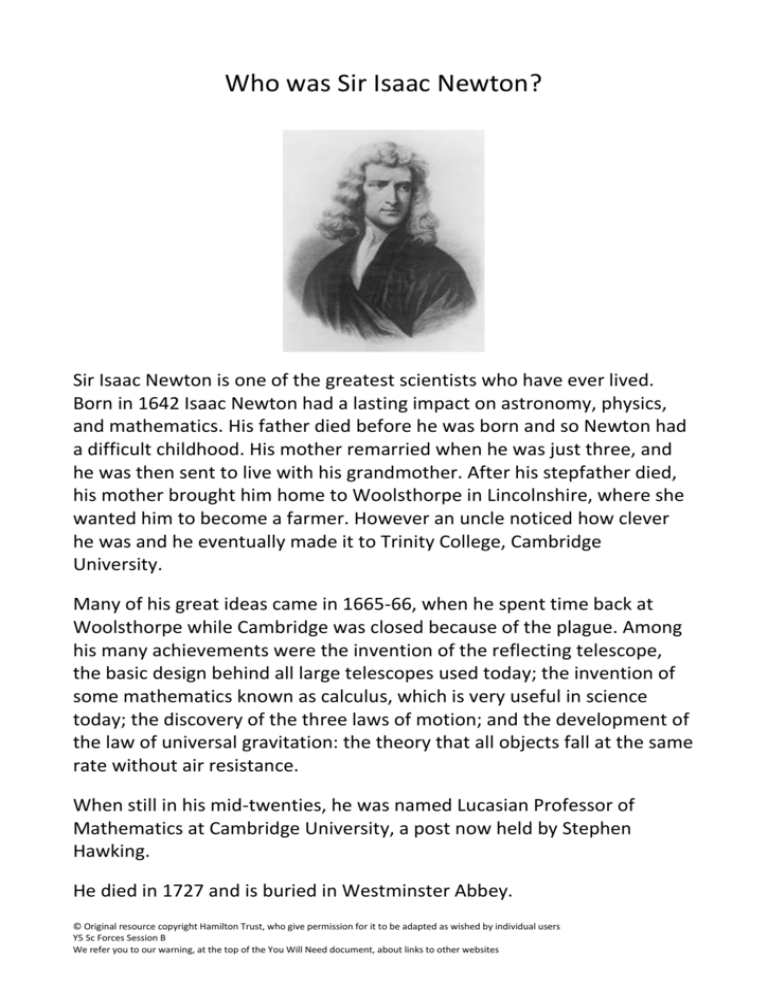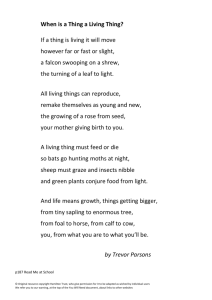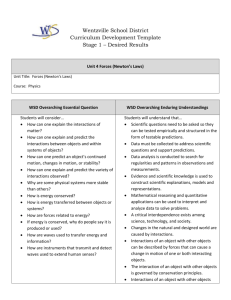Opposing forces Text Resource
advertisement

Who was Sir Isaac Newton? Sir Isaac Newton is one of the greatest scientists who have ever lived. Born in 1642 Isaac Newton had a lasting impact on astronomy, physics, and mathematics. His father died before he was born and so Newton had a difficult childhood. His mother remarried when he was just three, and he was then sent to live with his grandmother. After his stepfather died, his mother brought him home to Woolsthorpe in Lincolnshire, where she wanted him to become a farmer. However an uncle noticed how clever he was and he eventually made it to Trinity College, Cambridge University. Many of his great ideas came in 1665-66, when he spent time back at Woolsthorpe while Cambridge was closed because of the plague. Among his many achievements were the invention of the reflecting telescope, the basic design behind all large telescopes used today; the invention of some mathematics known as calculus, which is very useful in science today; the discovery of the three laws of motion; and the development of the law of universal gravitation: the theory that all objects fall at the same rate without air resistance. When still in his mid-twenties, he was named Lucasian Professor of Mathematics at Cambridge University, a post now held by Stephen Hawking. He died in 1727 and is buried in Westminster Abbey. © Original resource copyright Hamilton Trust, who give permission for it to be adapted as wished by individual users Y5 Sc Forces Session B We refer you to our warning, at the top of the You Will Need document, about links to other websites Sir Isaac Newton’s Laws of Motion Newton was a clever man. An avid scientific fan. He questioned many things he saw. Like ones we had no answers for. He thought them through right to their cores. Then gave us many handy laws. Newton’s First Law Of Motion: Without a force of push or pull an object will remain quite still. With just one push at just one time that object moves in one straight line. Newton’s Second Law Of Motion: A bigger Force accelerates an object that is heavy-weight. While objects of a smaller mass don’t need much Force to move them fast. So Newton noticed they obey that Force will equal m times a. Newton’s Third Law Of Motion: Now bend a stick. Before it cracks you’ll feel its force of pushing back. For every action there will be an equal one – opposingly. Without his formulas in place we’d soon get lost in outer space. So Isaac’s Laws help us traverse the reaches of our universe. by Celia Berrell Taken from: http://www.sciencerhymes.com.au/published-poem © Original resource copyright Hamilton Trust, who give permission for it to be adapted as wished by individual users Y5 Sc Forces Session B We refer you to our warning, at the top of the You Will Need document, about links to other websites Book on Table The table pushes upward on the book Book Table Gravity pulls downward on the book © Original resource copyright Hamilton Trust, who give permission for it to be adapted as wished by individual users We refer you to our warning, at the top of the You Will Need document, about links to other websites Y5 Sc Forces Session B Balanced Forces Force of wall pushing back © Original resource copyright Hamilton Trust, who give permission for it to be adapted as wished by individual users We refer you to our warning, at the top of the You Will Need document, about links to other websites Force of hand pushing Y5 Sc Forces Session B











